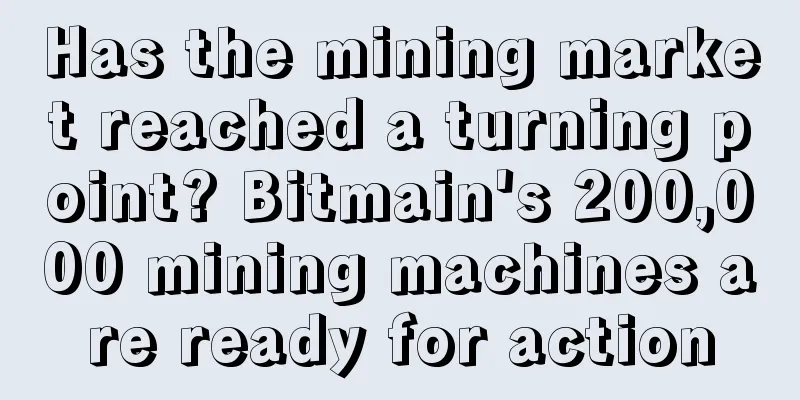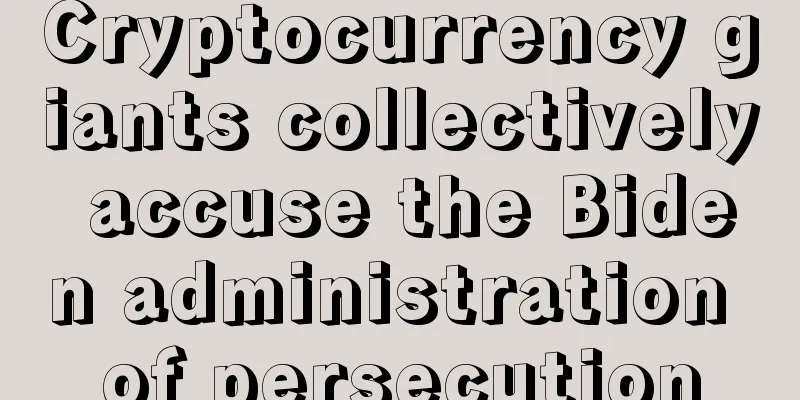Are mining pools the first to be regulated? On external incentives and new architectures

|
Author: NEST Enthusiasts_Jiu Zhang Tian Wen With the continuous development of the blockchain world, the scale of mining is getting larger and larger, and the difficulty is getting higher and higher. The early traditional small-scale miners' SOLO mining model has withdrawn from the market, and replaced by mining pools that integrate distributed miners' computing power: some scattered miners entrust the mining machine computing power to professional institutions for management, and regularly settle mining income. The emergence of mining pools was once questioned by many decentralized fundamentalists, but when everyone fully understood the significance of forks, these doubts were no longer resolved. We will write a special article to discuss forks in the future. Although the concerns about decentralization have been dispelled, another problem of mining pools has not been discussed: the problem of external incentives that go against the interests of miners! This will receive more and more attention on Ethereum. The so-called external incentive is a concept corresponding to internal incentive. Before discussing this concept, let’s first clarify the relationship between miners and mining pools: this is a very clear principal-agent relationship in the traditional legal system, where miners are principals and mining pools are agents. In a principal-agent relationship, the agent should maximize the interests of the principal within the agreed scope, and cannot use the convenience of agency to do anything to transfer interests or maximize their own interests (without maximizing the interests of the principal). Although this principle is clear, it is difficult to actually implement it, and some mechanism design is needed, that is, to solve the problem of incentive compatibility: the agent’s maximization of its own interests and the maximization of the principal’s interests are consistent. Based on the principal-agent relationship, let's discuss the internal incentives and external incentives of the mining pool. The so-called internal incentives refer to the value goals and their distribution agreed upon by the principal and the agent within the scope of the contract. In terms of mining, the internal incentive is to maximize the mining income, including the mined ETH and the ETH obtained from packaged transactions. Since the general mining pool obtains a certain proportion of the total mining income, this contract arrangement is theoretically incentive-compatible, that is, the mining pool can only maximize its own interests if it maximizes the interests of the miners, or maximize its own interests, which naturally maximizes the interests of the miners. This is the compatibility of internal incentives that we have analyzed so far. But on Ethereum, the situation may change, and this change is the emergence of DEFI. We mentioned in the previous article about the risks of miners that although miners cannot change transactions, they may selectively package transactions. However, some DEFIs have deviations in the distribution of benefits for the priority of transactions. The earlier the package is packaged, or only one transaction is packaged, the greater the benefit will be. At this time, the mining pool may use its own computing power advantage to arrange related transactions. This arrangement does not completely harm the interests of miners, because miners will still obtain the maximum mining income, or slightly lower mining income, that is, the mining pool perfectly implements internal incentives, but obtains other income in DEFI through the arrangement of packaged transactions. This part of the income is not stipulated in the miner's contract, and it cannot even be stipulated. This is external incentives. Recently, people often mention the term front-running, which means that the miners mentioned above arrange the packaging of a certain transaction in advance. It has been regarded as a risk by the DEFI industry. The mining pool is the most likely to take advantage of this advantage. If the mining pool gains income as a result, how should the ownership of this income be determined? I mentioned earlier that the mining pool and the miners are in a traditional agency relationship. This income should strictly belong to the miners! The problem now is that if the mining pool does not disclose its packaging strategy, no one can infer whether the mining pool has received external incentives based on the on-chain data, and the miners cannot provide evidence! This is a black hole of trust. However, if the mining pool discloses its strategy and strictly enforces it, although it can avoid the problem of external incentives, it is easy to be targeted by certain malicious attackers. For example, the strategy of blocking attack is very clear, or conversely, the benefits of external incentives are seized by attackers (indicating that the design of downstream DEFI should avoid similar front-running architectures). There are even other more serious attack scenarios that make it difficult for on-chain application developers to defend themselves. This creates a contradiction in the mining pool: an open strategy leads to attacks, while a non-open strategy leads to a trust black hole. We propose a reasonable mining pool architecture: open random strategy arrangement. According to the effectiveness of internal incentives, several reasonable packaging strategies are designed and made public. These strategies are all aimed at maximizing the interests of miners. The difference lies in the order or combination of packaging. Then, based on some hardware random sources and software random algorithms, they are combined into a hybrid strategy (a set of strategies with probability distribution), and the original data of the random source is saved for miners to verify at any time. This solution prevents attackers from effectively capturing the packaging strategy, and for all miners, it greatly reduces the possibility of the mining pool obtaining external incentives, that is, fills the trust black hole. Of course, if the mining pool does not strictly implement this process and can still force profits, then evidence and supervision can come in handy. Because mining pools fully comply with the traditional legal system, the theoretical basis for their supervision is very sufficient. In the future, they will definitely be the most sensitive module of the public chain system and the module that is most easily included in the supervision. This is inevitable for the orderly development of the entire public chain. We believe that the mining pool architecture we proposed will appear sooner or later. |
>>: The price rebounded and kept going up, and is expected to break yesterday's high
Recommend
Willow Leaf Eyebrows for Men and Women: What are Willow Leaf Eyebrows?
In fact, many people nowadays don’t like willow-s...
How to predict career through palmistry
A person’s career situation can be seen from palm...
A woman's teeth can tell whether she is a lucky charm for her husband
A woman's teeth can tell whether she is a luc...
What does a man with a mole on his neck mean? What does a mole on the right side of the neck mean?
What does a mole on the neck mean? Is it good to ...
Observe the shape of your eyebrows to see the strength or weakness of your life fortune
Lion eyebrows are one of many eyebrow shapes, whi...
Different ear sizes and uneven facial development
People with earlobes of different sizes tend to h...
The Mt. Gox case triggered a panic sell-off of BTC. Is the market overreacting?
Source: Odaily Planet Daily Author: Xin Nan On th...
What does a mole behind the ear mean?
Everyone has various moles on their body. Moles i...
Pointed ears
A person's facial features are closely relate...
How to read the wealth lines on palmistry
The degree of wealth a person will have in his li...
Crypto Markets Pull Back Slightly Again, Why?
Multiple factors from both the macro market and w...
Analysis of the facial features of men with thick eyebrows
People often say that eyes are the windows to the...
Moles on the clavicle indicate a gentle personality.
People with moles on their collarbones are genera...
What does it mean when there are islands, stars, or obstacles on the lifeline?
The presence of island patterns, star patterns an...
What does the left eyelid twitching mean?
There is a saying that goes like this among the p...









